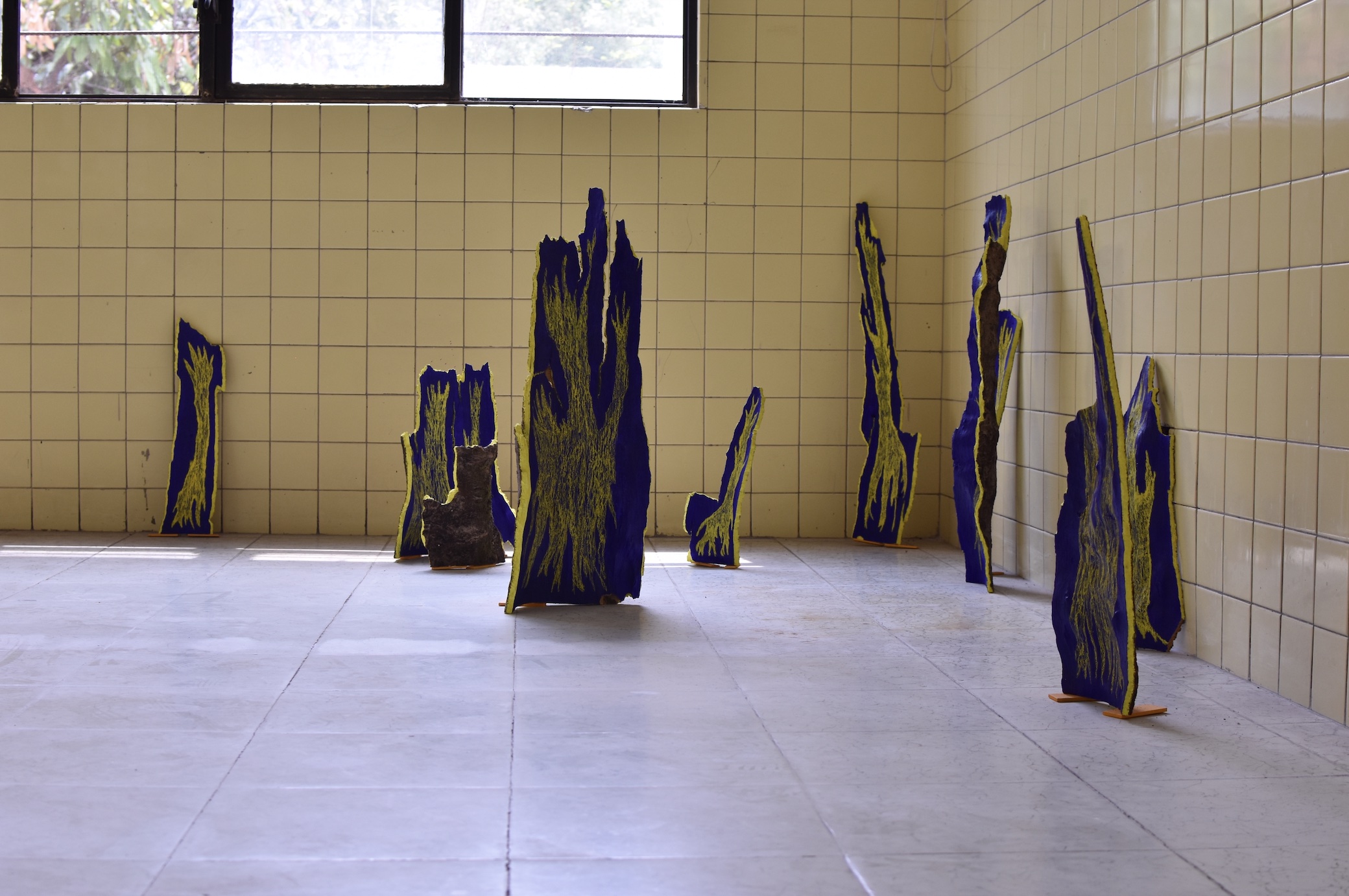
Interview
Minutes on Time (Seen from 'Fuera de Lugar') | Interview with Marco Valtierra
by Maya Renée Escárcega
Espacio Cabeza
Reading time
9 min
It is known that the sentence "the man who does not know his history is condemned to repeat it" is uncertain. Due to the indeterminate nature of the discipline, the subjectivity of the pen, and the embodiment of the eye in historiography, the action (or inaction) of knowing the past and applying it (or not) in contemporary situations depends on wills.
The history of contemporary Tapatío art is narrated by its primary sources. Not only interviews, testimonies, archives, and works of art are present, but also the actors themselves are the pen and active voice. We establish a continuous dialogue between the past and the present in a dialectical contemporaneity,¹ which allows for a dynamic understanding of time: the ideas, forms, and problems of the past illuminate those of the present and vice versa, while the future is speculated and anticipated through our interactions with the past and the present.
The first time I visited Espacio Cabeza, I was conducting research on the process of political subjectivation behind the local myth of "now artists live and produce here." Guadalajara, murió el Rancho Grande, an exhibition that specified what was alluded to in pieces such as Luis F. Muñoz's A Pleasant Stay is a Guarantee of Return (2020).²
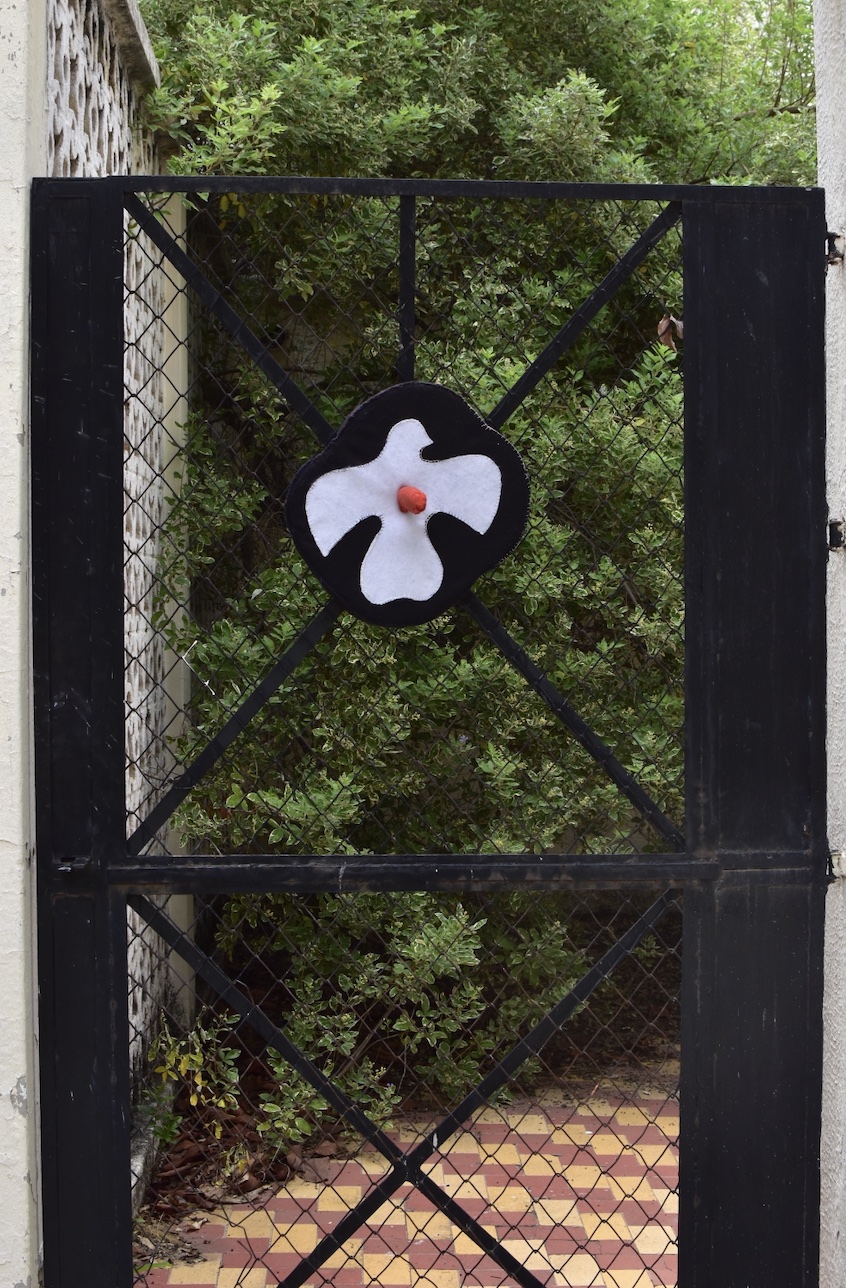
Talking with Marco Valtierra about his review of Espacio Cabeza from manifestations of the present in Fuera de Lugar, an exhibition presented in the framework of its fifth anniversary, I mentioned to him that "alternative" art spaces in the nineties closed their doors when curators or artists assumed positions in museums. It is from this historical awareness projected into the future that the conversation was raised. Beyond thinking in formulas, juxtaposing different temporalities creates a space where future aspirations can be explored.
Maya Escárcega: Espacio Cabeza was founded in 2019 as a "nomadic platform."
Marco Valtierra: The immediate idea came from Juan Carlos Guerrerosantos. We got together with Noemí García and César Axel to make the first cycle of exhibitions in what is now Zuno Café. The idea was to make it nomadic, but it's not an easy thing to do. Then we launched a call for the exhibition Contrapuntos de la Caverna [Counterpoints of the Cavern] and that's when we found the venue.
At the beginning, we worked with friends because it was what we had at hand. Thinking that [when you are starting] nobody invites you to projects, we asked ourselves: How can we dismantle that [dynamic]? By calling out to connect with new people.
ME: What was the initial scenario like in terms of material conditions?
MV: Doing what we want with what we have, especially with encouragement. Compared to the panorama of five years ago, you invent your own world. That is the condition of contemporary Tapatío art: if you don't invent it yourself, nobody else is going to come and invent it for you.
Talking about these material conditions, the first individual exhibition was by Luis F. Muñoz. The adaptations to the space, in the end, did not happen. Try to do it well with the [available resources], but also be critical and understand that there are conditions that will allow you to do or not.

ME: What about desire?
MV: It had to do with catalyzing our own careers. The encouragement was that, how can I build a career doing my own project?
(|)
ME: What moments, beyond specific projects, have been significant for Espacio Cabeza?
MV: Thinking through the rehearsal: Espacio Cabeza can fall down in symbolic terms and it doesn't matter. If we think in metaphorical terms that we are building or erecting something, it can always fall down in discursive terms, but it's okay because we are rehearsing. The great virtue of the independent space is that, although it is part of the superstructure of art, it doesn't [operate] with the certainty that the museum, the biennial, the gallery, or the fair offers.
ME: And what moments have been challenging?
MV: Each exhibition is a challenge and a gamble, in terms of the fact that there is no decent economic retribution for those who make Espacio Cabeza and, therefore, we can't pay the artists. How is it sustained? From a network of friendship and wills.
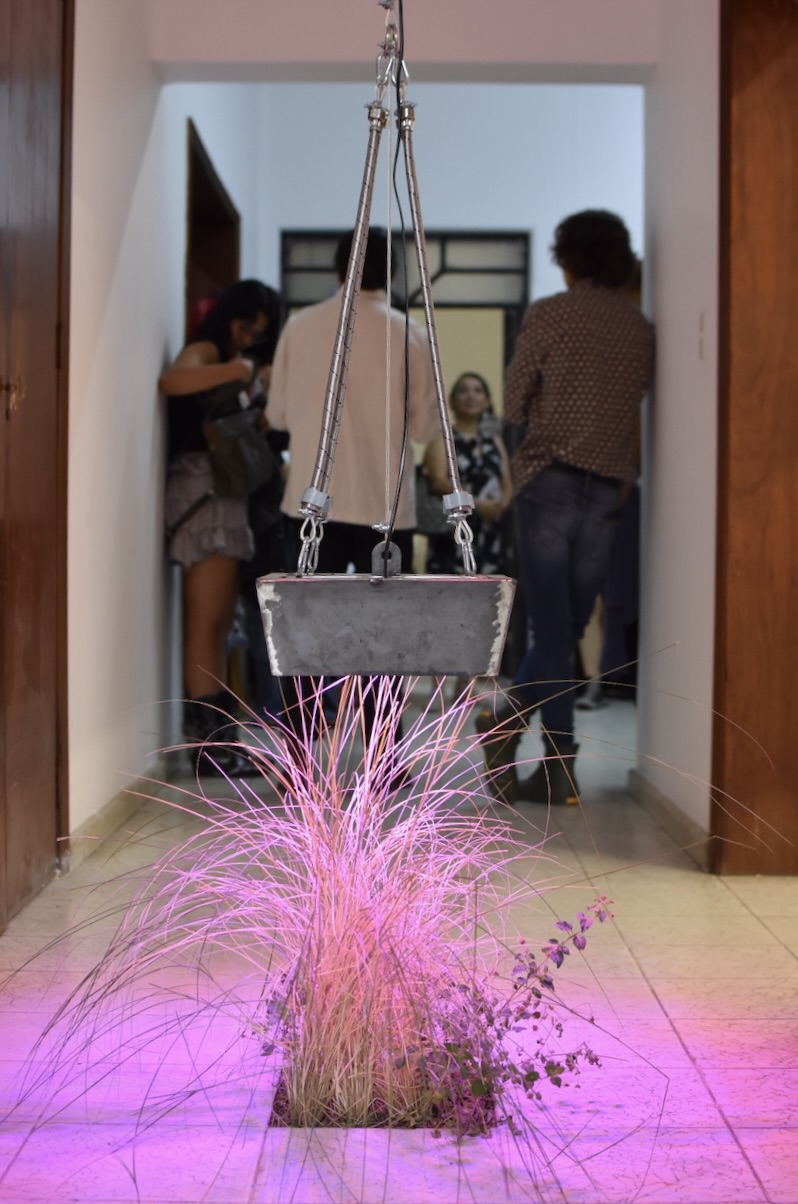
ME: Sometimes the cooperativism of working with friends is confused with normalized abusive practices. How do you think we can avoid the reproduction of power structures typical of dominant spaces within a self-managed project, among team members, artists, and collaborators?
MV: It has to do with being clear from the beginning: there is no money, there is a hammer and two nails. It's an ethic of transparency. It might seem that there is more infrastructure, but I don't earn money. It is a great dissatisfaction that your work can't be decently remunerated. Not everyone is willing to work like this. I am running an agenda that is going to give work to artists, but the same does not happen in terms of [mutual support], particularly in terms of visibility. We do this because there is a desire to be visible, to be present, which has to do with a production [dynamic] in which you have to be exhibiting. We must not lose sight of the fact that we are subjected in one way or another to this logic. We have to understand where we play and how we can play.

What is it that encourages us and motivates us to continue here? We believe in the logics made possible by art, which escape the scientific and offer another panorama of the world.
ME: Who do you have to be visible to for this to be worthwhile?
MV: There is a payoff in terms of symbolic capital, that's the capitalist trap. The promise is that at some point I will gain access to a place where all this effort will be rewarded. It's a trap because you might get there or you might not, or you get to the museum and it's still underpaid. If this is sustained [like this] it's because of class, because the artist who gives his work away can think in the long term; they don't have the immediate urgency. Along the way, you find allies that keep everything afloat. It doesn't mean that I'm not on my last straw, but they throw you a bone... and then another one.
In the collective imagination, we think of the curator as this hegemonic agent who with his cane illuminates the path of an artist and opens doors for him. But it also happens the other way around. From the beginning, artists like Karian [Amaya] believed in my intentions and that's what makes me be here. For the curator to become who he is, he had to have received the support of agents who told him: "I believe in you, I trust you." For me it was Raúl Rebolledo, Carlos A. Mora, and the Zarur family.
[Hence] as a constant, we have hosted the first exhibition of several artists, among them, Omar Fidel García, Juan Carlos Guerrerosantos, Diego González, Julieta Beltrán, Luisa Mendoza, Valeria Michelle, and Maximiliano Ruelas.
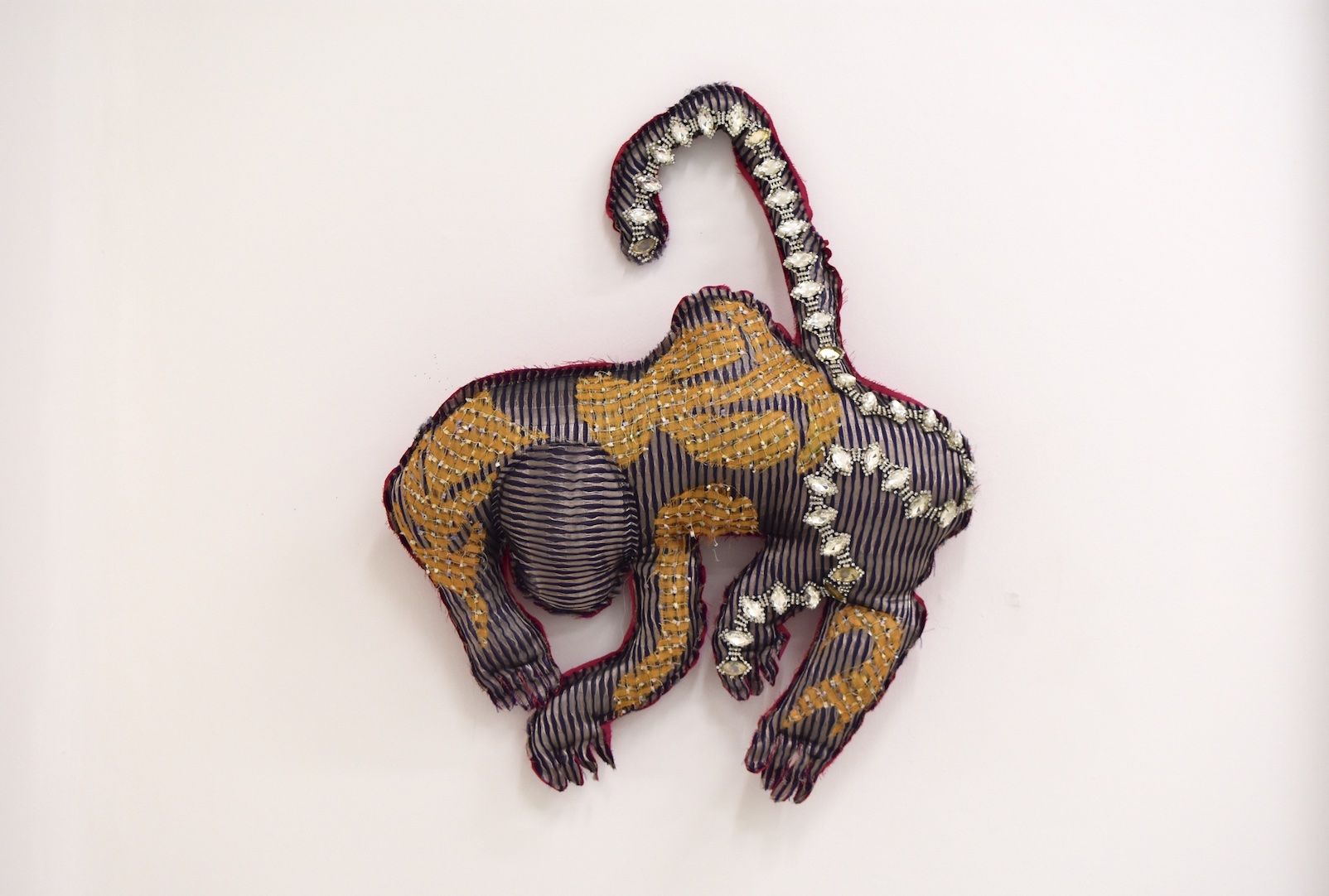
ME: The curator's imaginary is disrupted, but Espacio Cabeza has also been a laboratory to test curatorial practices as well as artistic practices.
MV: Espacio Cabeza is a curatorial project. In 2021 I invited Caroline [Montenat] because I wanted to make the library a space for thought and discourse production. Here there is room for other curatorial voices to teach other things and multiply the presence of artists. We invited Yuriko Cortés, Adriana Flores, you, Otro Espacio, and Obra Negra.
Adding other voices from which to understand our own.
(>)
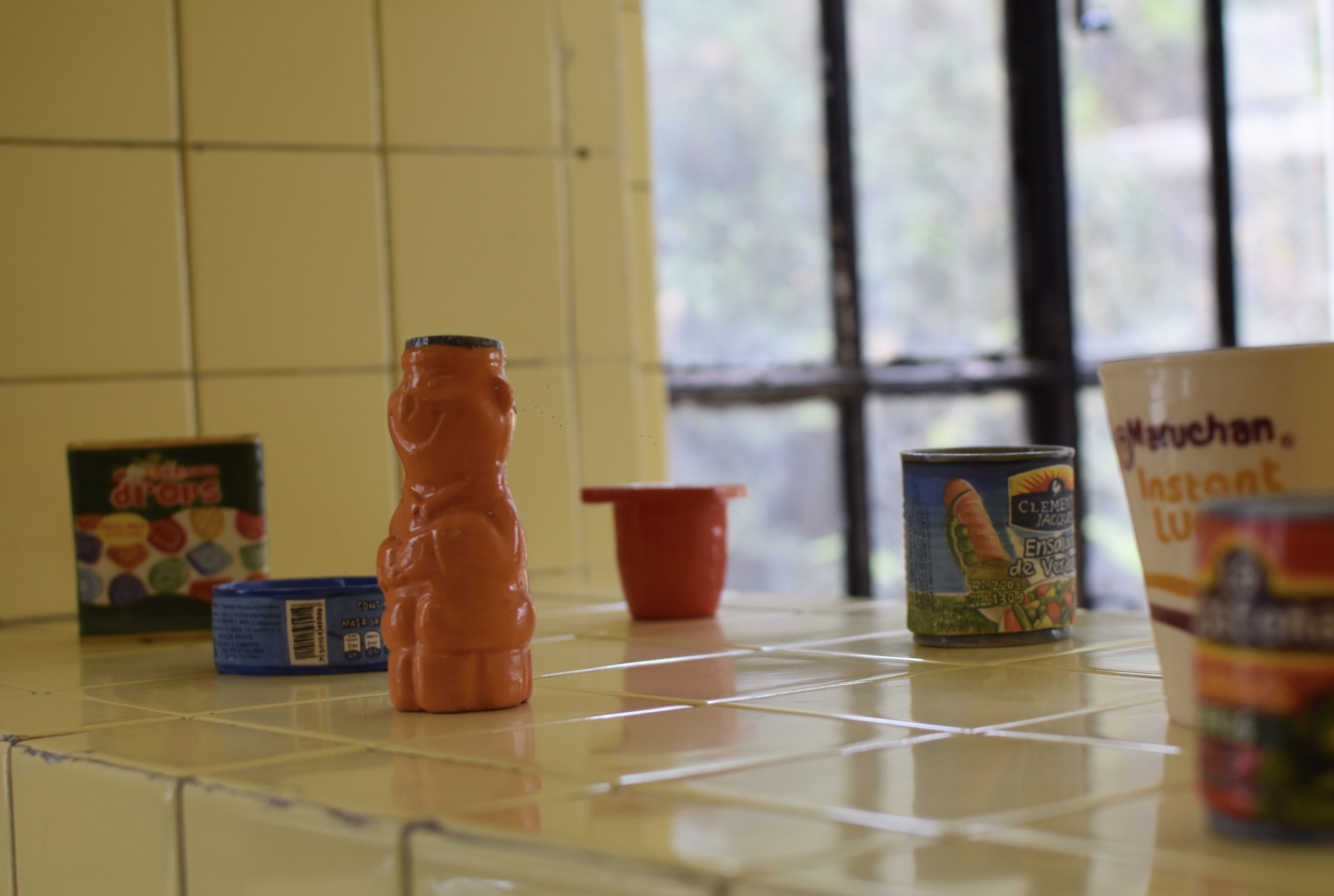
ME: Considering the history of local art, what role does the social, cultural, and political context of Guadalajara play in Espacio Cabeza? And conversely, what role does the same local context play in Espacio Cabeza?
MV: There are so few spaces in the city that, whether you want them to or not, they fulfill a specific role. As an artist, you need a space that is on the same level as your career. If you are no longer going to exhibit in a project space because you are no longer an emerging artist and the museum is a bit distant, where can you insert your work from a professional logic with a backing? Where can you propose versatile projects? Espacio Cabeza takes care of that. I want to think that what we do has a repercussion in the future and an immediate positive impact, trying to contribute to the professionalization of artists, to strengthen their practice, and gain visibility.
ME: What is the future?
MV: We are in a moment in which we are trying to be more professional. We are rethinking our lines of research because we are no longer those curators of emerging artists that we were five years ago. But, at the same time, we want to continue working with artists for whom this is their first exhibition because who else does it at this level? We want to think about what the city needs, not what we need for our careers, which are there too.
I am the axis of the project, but I am not Espacio Cabeza. There have also been other curators, and here the challenge will be that in the future the space survives when I am not there, which I think is complicated.
Translated to English by Luis Sokol
1: Bishop, Claire. "Radical Museology, or, What's Contemporary in Museums of Contemporary Art?". London: Koenig Books, 2013.
2: “What is new in Guadalajara is old in Mexico City and what is new in Mexico City is old in New York and what is new in New York is old in Berlin... And sometimes what is new in Berlin is old in Guadalajara (but Guadalajara does not give itself light for going around chasing after all of the above) [sic]”
Cover picture: Alonso Galeria, Mutante, 2024 in 'Fuera de lugar', Espacio Cabeza. Photo: Omar Elizarrarás
Published on June 30 2024